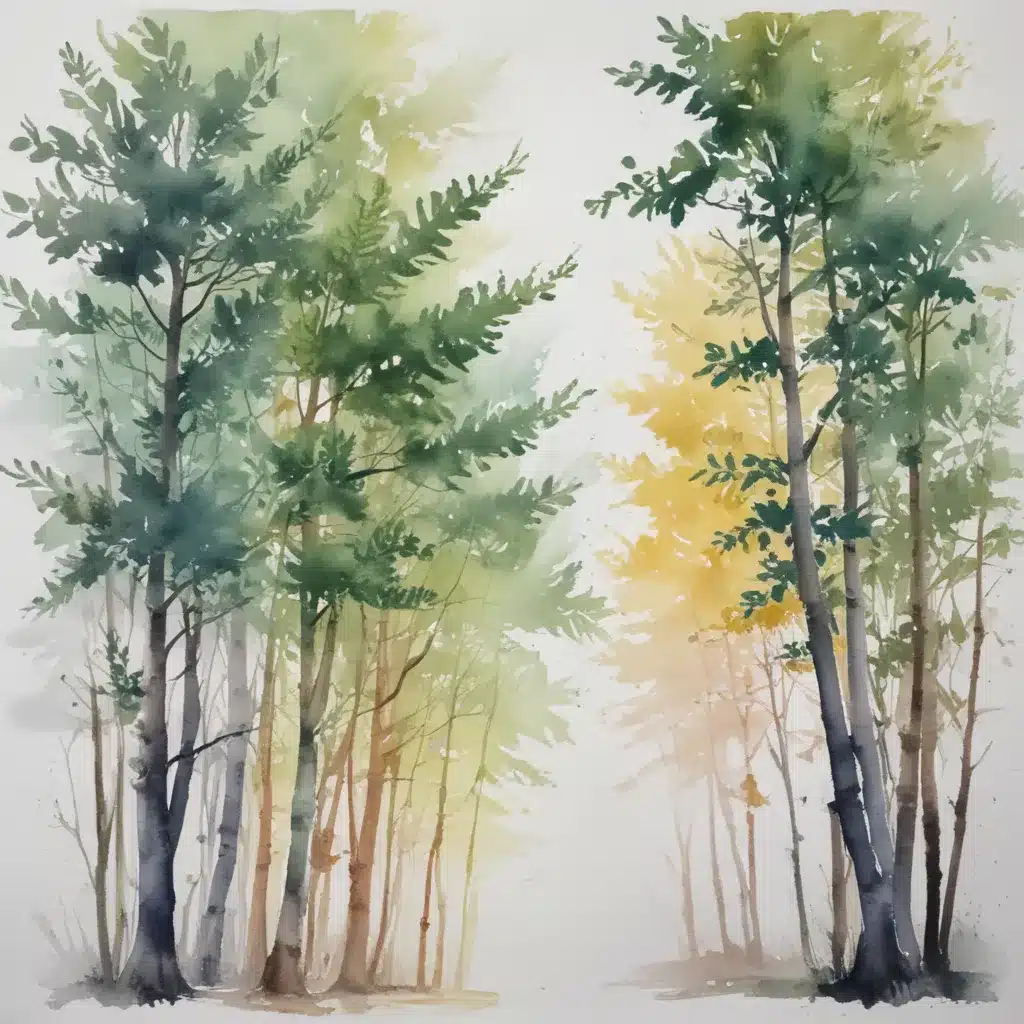
Watercolour painting is a medium that dances between the realms of control and spontaneity, offering artists a canvas for diverse creative expressions. From the meticulous details of realism to the boundless freedom of abstract art, watercolour transcends beyond a singular style, showcasing its remarkable versatility.
Now, this might seem counterintuitive…
Watercolour Characteristics
Watercolour is renowned for its ethereal charm and fluidity, allowing artists to capture the essence of their subjects through a symphony of pigments and water. The medium’s inherent unpredictability invites a partnership with chance, encouraging artists to embrace happy accidents and find beauty in the unexpected.
One of the great joys of working with watercolour is its accessibility. With just a few basic supplies — a set of paints, brushes, and paper — anyone can embark on a journey of artistic exploration. This ease of entry demystifies the process of art-making, opening the doors to creative expression for people of all ages and skill levels.
But watercolour’s true magic lies in its ability to become a conduit for personal expression. The medium responds uniquely to each artist’s touch, from the amount of water used to the pressure of the brushstroke. This intimate relationship allows for deeply personal artworks that are as varied as the individuals creating them.
Watercolour Techniques
Realism
In the realm of realism, watercolour becomes a tool for meticulous representation, where controlled brushstrokes and fine details bring the natural world to life. Artists like Albrecht Dürer and Steve Hanks have mastered the medium’s capacity for capturing life with startling accuracy, demonstrating the power of watercolour to convey complex narratives through realism.
Dürer’s “Young Hare” (1502) stands as a testament to the medium’s ability to render the world with scientific precision, while Hanks’ works, known for their emotional depth and extraordinary realism, capture the human condition in a way that is both poignant and breathtaking.
Impressionism
As we shift towards impressionism or loose work, watercolour reveals its ability to capture the essence of a moment. This style is characterized by loose brushwork and visible brushstrokes, where the emphasis is placed on light and colour over intricate detail. Artists like Monet and Winslow Homer have masterfully employed watercolour to evoke powerful atmospheric effects, inviting the viewer to experience the fleeting beauty of the natural world.
Contemporary artists, such as Alvaro Castagnet, carry the impressionist torch into the 21st century, using watercolour’s dynamic qualities to bring urban and natural landscapes to life with remarkable spontaneity and fluidity.
Abstract and Expressionism
In the realm of abstract art, watercolour invites artists to play, to discover unexpected connections between colours, and to create compositions that resonate with emotion and energy. Wassily Kandinsky’s bold, non-representational works showcase the medium’s capacity to convey meaning beyond the literal, while Bridget Riley’s precise geometric patterns explore the abstract possibilities of watercolour and gouache.
Expressionism in watercolour is marked by bold colour choices and dynamic, confident brushstrokes. Artists like Emil Nolde and Sargent Claude Johnson use the medium to express intense emotions, conveying powerful messages and evoking strong emotional responses.
Minimalism
In minimalism, watercolour is stripped down to its core — restrained brushwork, a limited colour palette, and a strong emphasis on composition and balance. This art style teaches us that sometimes, less is indeed more, as evidenced by the works of Agnes Martin and Ian Davenport, who showcase the beauty of simplicity through watercolour.
Illustration
The illustrative approach to watercolour brings stories, concepts, or characters to life through clear, precise lines and colours. Artists like Beatrix Potter and Julie Vivas have mastered the medium’s ability to convey narrative and emotion, blending visual appeal with captivating storytelling.
Mixed Media
The mixed media approach celebrates watercolour’s ability to play well with others. By combining watercolour with pencil, gouache, charcoal, ink, or collage, artists can explore new textures, contrasts, and dimensions, creating artworks that are rich, layered, and deeply personal. The innovative works of John Singer Sargent and contemporary mixed media artists like Sigrid Calon demonstrate how watercolour can merge with various mediums to push the boundaries of artistic expression.
Creative Process
Watercolour’s versatility is not just confined to its ability to adapt to various artistic styles or the breadth of its palette. Its true magic lies in its accessibility, its capacity for spontaneity, and its unique ability to merge with the artist’s intentions, making it a profoundly personal medium.
The inherent unpredictability of watercolour is where its spontaneity shines. Unlike other mediums where control and precision can dominate, watercolour invites a dance with chance. This partnership with the unexpected encourages artists to embrace imperfections, learn from the happy accidents, and find beauty in the serendipitous merging of colours and forms.
Perhaps the most profound attribute of watercolour is its ability to become a conduit for personal expression. It responds uniquely to each artist’s touch, from the amount of water used to the pressure of the brushstroke. This intimate relationship between the artist and the medium allows for deeply personal artworks that are as varied as the individuals creating them. Watercolour can convey the subtlest of emotions, the tranquility of landscapes, or the vibrancy of urban life with equal efficacy.
Conclusion
The journey of exploring watercolour is endless. As technology and materials evolve, so too will the techniques and applications of watercolour, promising a future where its versatility will only expand. From digital watercolour simulations to innovative water-based media, the evolution of watercolour is boundless.
In the world of art, there are no mistakes, only discoveries. So why not pick up your brush and see where watercolour can take you? Whether you’re drawn to the precision of realism or the freedom of expressionism, this medium offers a universe of possibilities waiting to be explored.
Tip: Practice daily sketching to continually refine your technique